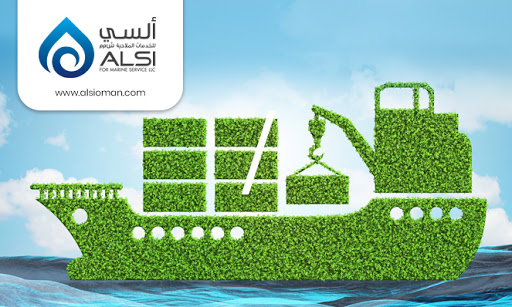Shipping industry is one of the major contributors to the global economy. Being the most economical freight forwarding option, over 90% of the world trade is transported through the ocean. Safety and efficiency in international shipping of bulky and oversized cargos is the major advantage a shipper is offered by the maritime industry.
The changing perspectives of consumers are now looking for environmental friendliness in every aspect of their operation. The demand for sustainability is also changing the way products are being shipped. The Ocean is the most desirable mode of transportation is contributing 3% to global carbon dioxide emission. Though the percentage is considerably low when compared to air and road freight, it still can adversely impact the marine environment and the coastal population. Keeping the environment in mind, the ocean freight forwarders are on a venture to establish sustainable alternatives for packaging and shipping.
What is sustainable shipping?
Sustainable shipping/ green shipping is the implementation of sustainable development to the shipping sector with the incorporation of environmental and social responsibilities. The development of sustainability in shipping in effect positively sharpens the global environmental, social, and economic curves. While considering the environmental aspect, sustainable shipping considerably reduces the emission rates of maritime vehicles thereby protecting the ecosystem. As a result, human risks are reduced providing quality to lives which adds to social development. The development of sustainability in shipping can bring up cost efficiency and competitiveness in the shipping industry resulting in economic growth.
Sustainable solutions for green shipping
The logistics and shipping companies are taking initiative for new innovations for sustainable shipping solutions. To achieve the ultimate aim of completely decarbonizing the shipping sector, it requires the collaboration of technological and operational measures along with the use of renewable resources. A few such sustainable shipping solutions are discussed below.
- Use of alternative fuels –Studies show that the global carbon emission from shipping may increase to 17% by 2050. Hence it is of utmost necessity to reduce emissions to attain sustainability. This can be achieved through the use of efficient and cost-effective fuel alternatives. The use of biofuels and liquid natural gas (LNG) rather than heavy oils reduces carbon emission thereby achieving sustainability. Hybrids solutions like battery-operated ships and ship electrification can also lead to zero carbon emission.
- Eco-friendly packaging – Consumers being obsessed with environmental safety are going for biodegradable alternatives. As a result, measures have been taken by the logistics companies to adopt biodegradable packaging solutions. The companies also assure the reusability and recyclability of the packages which points to the sustainable shipping industry.
- Compliance with global environmental regulations – All major countries except a few have signed up the global environmental regulations for the years 2020, 2030, and 2050. The sea freight forwarders are on a mission to achieve their individual goals thereby contributing to sustainable shipping industry. In short, compliance with global environmental rules can help achieve the goals of sustainable shipping in the near future.
- Slow streaming – Fuel consumption of ships depends on the traveling speed. Larger consumption of fuel is required for increased speed resulting in higher emission. Slow streaming have both environmental and economic benefits. Slow streaming not only reduces carbon emission but also decreases the engine load which in turn lowers the need for maintenance. The slow stream has been used for ages and is considered as the most efficient sustainable shipping alternative.
- Ballast water management system– When a ship is not carrying any cargos, it uses water as a ballast to maintain stability. This water is stored in the ship which builds home for microorganisms. On reaching the ports, this water is opened to the ports through which the microorganism finds ways to the ocean effecting the marine ecosystem. In compliance with the green shipping strategies of IMO, the shipping companies are now bound to the Ballast water management system. In BWMS, the water in the ballast should undergo filtration and electro chlorination before pumping out at the ports.
- Use of renewable energy sources– Renewable energies like wind and sun can be effectively used to power ships. The uses of these renewable energies consume less fuel resulting in zero or low emission.
- Autonomous ships – Artificial intelligence is going to shape up the future of the shipping industry. Autonomous ships are those which does not require a crew for operation. The ships will be operated from shore and the software installed in the ship aids in the movement of the ship. With the use of performance management systems and big data analytics shipping companies can attain economic growth with a sustainable shipping solution.
Sustainability in sea freight has become a necessity. Though logistics and transportation companies have taken their first step towards sustainability, the way to green shipping is still far.










